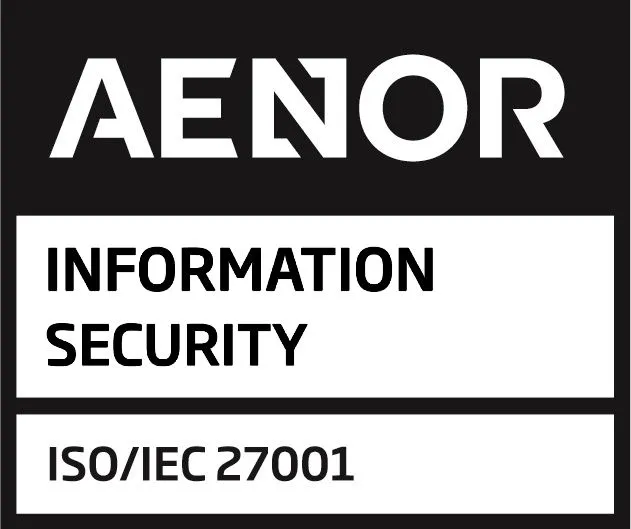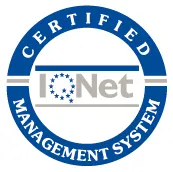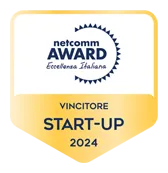
In an increasingly competitive business environment, recognising and motivating employees has become a strategic necessity. However, many companies face the challenge of doing so without committing large budgets. This is where the points reward system comes in: a flexible, scalable and effective solution to incentivise performance and improve team engagement.
Table of Contents
In this practical guide, you’ll gain an in-depth understanding of what points reward systems are, how they compare to other forms of recognition, when it’s the best system to use, and how to plan a successful programme. If you’re looking for a smart way to motivate your employees without breaking the bank, read on.
What are points reward systems and how do they work?
Imagine that every time an employee achieves a goal, collaborates with a colleague or simply does a great job, they earn points. It’s like a game… but at work. That’s basically a points reward system: a fun and flexible way to recognise effort and motivate the team on a daily basis.
These points don’t just stay in numbers: they accumulate and can then be redeemed for real prizes. From technology products to experiences, days off or gift cards. The key is that each person chooses what they like the most, which makes the recognition much more meaningful.
In addition, this type of system allows you to reward without having to spend a lot of money. It can be adjusted to the available budget, keep motivation active in the long term and give visibility to achievements on a constant basis. It is a simple, but very effective formula.
Comparison with other types of employee rewards
When it comes to recognising employees, there are many ways to do it: cash bonuses, one-off awards, days off, public recognition… So why opt for a points reward system?
Unlike one-off bonuses or generic rewards, points-based rewards offer a much more personalised and continuous experience. Instead of a single reward that is given and forgotten, points allow you to accumulate, choose and redeem at a time that suits you. This keeps the motivation burning over time.
In addition, this system is more equitable. You can reward everything from small, day-to-day actions to larger achievements, without it being a headache for HR. It also helps employees feel that their efforts don’t go unnoticed, which strengthens commitment to the company.
Advantages and disadvantages of the points reward system
Imagine this: it’s the end of the month and the sales team has exceeded their targets. Instead of handing out the same bonus to everyone, they receive personalised points that they can redeem for what really motivates them. One chooses a dining experience, another a subscription to their favourite streaming platform. The result? Real and lasting motivation.
That’s the power of points reward system, an increasingly popular tool for HR teams and sales managers who want to recognise without breaking the bank.
Benefits that make a difference:
- Total flexibility: adapts to the size of your company and any budget.
- Constant motivation: employees see their progress and stay engaged.
- Personalisation: everyone chooses their award, which makes the recognition have real emotional value.
- Cost control: you know from the start how much you are going to invest and how it is distributed.
- Drama-free scalability: perfect for growing companies or companies with high turnover.
Some disadvantages to consider:
- It requires clear planning so that the whole team understands how it works and what is expected.
- Without a good platform, management can quickly become complicated.
- If the prize catalogue is limited and/or not renewed, excitement can drop.
- Poor communication can lead to comparisons or doubts about the fairness of the system.
That is why it is key to rely on tools that make the complex easy, such as VIP Incentives, which automates and personalises the entire experience in a professional and simple way.

When is it advisable to use a points reward system?
A points reward system is incredibly versatile and can be adapted to different business contexts. While any organisation can benefit, there are certain times when this type of programme becomes a real driver of change and motivation.
Ideal situations to implement it:
- When you’re looking to boost motivation: if you notice that team morale is slipping or energy is waning, this system can be the spark that reignites enthusiasm. Setting achievable goals with attractive rewards can renew daily commitment.
- In training and development programmes: points are a great way to incentivise participation in courses, workshops or new learning initiatives. You can reward everything from attendance and test scores to the practical application of what has been learned.
- During organisational transformations or internal changes: If your company is in the midst of restructuring, implementing a new culture or adopting technology, a point reward system can ease the transition. Rewarding behaviours aligned with the new direction promotes a smoother and more positive adaptation.
- To promote teamwork: If your goal is to improve collaboration across departments or within a team, you can offer points for joint achievements, celebrating collective success. Even give managers the possibility to distribute a pool of points to their team based on collaborations and achievements of the team as a whole.
- In companies with limited budgets: when there is no margin for large investments, this system allows total control of spending, while still motivating. Each small portion of points earned already conveys recognition and can be redeemed for prizes when you have a sufficient sum.
- In areas of measurable objectives: such as support or customer service, where points can be assigned for concrete and measurable achievements.
- To reinforce corporate culture: in times of cultural redefinition, points can reward those actions that reflect the desired values, generating a more coherent environment aligned with the company’s vision.
- In wellness or organisational climate programmes: whether by encouraging participation in internal events or reinforcing healthy habits, this system helps to create a more active and connected culture.
Bonus: What about sales?
This system was practically made for them! Sales teams live by goals, results and recognition. With a points reward system, you can not only assign points for sales closings or meeting targets, but you can create internal rankings, monthly challenges and even team tournaments to gamify the experience.
This does not replace the traditional bonus, but complements it with a constant and more visible layer of motivation. While bonuses are usually given out over time and in fixed amounts, points offer more immediate and personalised rewards, making recognition more frequent and emotionally effective.
What’s more, a system like this differentiates you from the competition: not just in how you motivate your existing team, but in how you attract sales talent.
In short: if your company is looking for an efficient and strategic way to recognise your team, this system is like a tailor-made suit. And if you’re in sales, this system can be your secret weapon to boost results and build loyalty among your stars.

How to plan and run a successful programme
Launching a points reward programme is not just about handing out points left and right. For it to really work – and motivate – you need a good strategy behind it. Here are some key steps to get it right from the start:
1. Define your objectives
Before you start, be clear about what you want to achieve: improve productivity, reinforce company values, increase participation in training programmes? This clarity will guide the entire programme design.
2. Establish the rules of the game
It is critical that employees understand how points are earned, how many points equate to what type of reward, and what behaviours or achievements will be rewarded. Transparency = trust.
3. Choose the right platform
This is where solutions like VIP Incentives come into play. This platform not only allows you to manage the programme in an automated and flexible way, but also offers an extensive catalogue of rewards and reports to easily measure results.
4. Communicate and launch with force
A good launch campaign is key. Use internal channels, build buzz, and make sure everyone understands how it works. Make sure it’s not something ‘extra’, but a natural part of the company culture.
5. Measure and adjust
It’s not about launching and forgetting. Periodically review how the system is being used, which rewards are being redeemed the most, if there are areas that are less participative… and make adjustments to keep the programme fresh and effective.
With these steps, your programme will not only be functional, but will leave a real impact on employee engagement and satisfaction.
Engage, recognize, and retain — all in one smart points reward platform.
Redemption dynamics and how to improve the user experience
A key part of the success of any points reward system is redemption. Because yes, collecting is all well and good… but being able to turn those points into something that really excites is what makes the system work.
How should the ideal redemption work?
- Easy and accessible: employees should be able to see how many points they have and what they can do with them at any time, from any device. In many industries, the majority of staff do not use a computer, and it is important that your programme reaches all employees.
- With real variety: the catalogue should offer options for all tastes and profiles: products, experiences, gift cards, days off, donations… the more personalised, the better.
- With achievable rewards: if everything seems too far away or too expensive in points, motivation is lost. There should be low, medium and high level rewards to maintain constant interest.
- With gamification: adding elements such as levels, badges or rankings can further increase participation and make the experience fun.
In addition, the redemption process should be transparent and quick. Nothing is more demotivating than waiting weeks to receive a reward or not knowing the status of your application.
And if you are thinking of hiring a platform to manage this type of programme, in the following section we tell you exactly what you should take into account to choose the best option.
What to look for when buying a points reward solution
Choosing the right platform can make the difference between a successful programme and one that no one uses. Not all solutions are the same, so here are the key aspects you should evaluate before making a decision:
1. Ease of use
The tool should be intuitive for both employees and administrators. If you have to do a master’s degree to understand how it works… you’re in trouble.
2. Rewards catalogue
Look for a platform with a varied, up-to-date and relevant catalogue for your team. Ideally, it should include physical and digital options, experiences and even the possibility to donate points.
3. Customisation
Every company is unique, and your programme should be too. Make sure you can tailor the platform and your initiatives to your culture, goals and values.
4. Scalability
Is your team going to grow? Are you going to expand to other countries? The platform must be able to accompany you in that growth without complications.
5. Support and service
Don’t underestimate this. Good technical support and ongoing advice make all the difference.
6. Analysis and reporting
Measuring results is key. The platform should offer clear statistics on participation, redemptions and user behaviour to help you optimise your programme.
VIP Incentives stands out as one of the most complete solutions on the market. Winner of the IMA Awards 2022 for the best recognition technology platform, it has been recognised for its innovation, ease of use and ability to adapt to different business environments.

Best practices and success stories
Implementing a points reward system is not just about activating a platform and expecting magical results. Companies that make a real impact do so by following certain best practices that make a difference.
Keys to success
- Make it part of the culture, not an extra: reward behaviours you want to reinforce, such as collaboration, innovation or customer service.
- Constant communication: remind your team that the system exists, what’s new in the rewards catalogue. Make it feel alive.
- Renew your initiatives or campaigns frequently: creating new and time-limited initiatives will make the programme more dynamic.
- Listen to the team: create a channel to receive suggestions on new ways to earn points or rewards they would like to see.
Real cases that inspire
Many companies that have integrated systems such as VIP Incentives, for example Interactius (Design Consulting), Aubay (IT Consulting), Teleperformance (Outsourcing services), Isprox (HR Consulting) and others of different sizes and sectors. In sectors such as retail, sales or customer service, where daily motivation is key, this type of programme has gone from being a ‘nice to have’ to a strategic tool.
Recognising employee effort does not have to involve big budgets or complex systems. Reward points are a flexible, scalable and highly effective solution to keep your team motivated, aligned with company goals and engaged on a daily basis.
Remember: success is all about planning, communication and choosing the right platform. Tools like VIP Incentives not only simplify management, but transform the recognition experience into something memorable, useful and sustainable.
Ready to implement a points reward system that really makes a difference to your team? The time is now!
New to Vip District? Contact us and find out what our platform has to offer!








